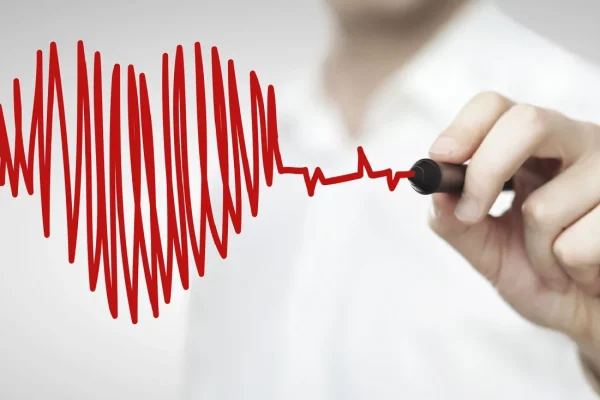
11 Sep Congenital Heart Defects in Children (A Guide For Parents)
Congenital Heart Defects in Children (A Guide For Parents)
By Island Hospital | September 11, 2024 12:00:00 PM
Medical Reviewer: Dr. Dan Giap Liang, Paediatrics & Paediatric Cardiology
Congenital heart disease is the most common congenital abnormality affecting millions worldwide. These conditions affect many newborns each year and can vary widely in severity.
Understanding the complexities of these conditions can be overwhelming for parents and caregivers.
This resource aims to provide essential information, support, and hope for families navigating the journey of caring for a child with a CHD.
What Is a Congenital Heart Defect?
Congenital heart defects are abnormalities in the heart’s structure that are present at birth. These defects can range from holes in the heart to problems with blood vessels or heart valves.
The cause is multifactorial although some genetic predisposition and some syndromes are commonly associated with congenital heart defects.
Early detection through prenatal or postnatal screenings is possible, though some cases are not diagnosed until later in life.
Types of Congenital Heart Defects
Congenital heart defects can be categorised into two main groups:
- Cyanotic heart defects
These defects cause low oxygen levels in the blood, often resulting in a bluish tint to the skin, lips and nails. - Acyanotic heart defects
These defects do not directly affect oxygen levels in the blood but can disrupt normal blood flow through the heart.
Common congenital heart diseases
Cyanotic heart defects | Acyanotic heart defects |
|---|---|
| Tetralogy of Fallot is a combination of four heart abnormalities:(i) A hole between the heart's lower pumping chambers (ii) Narrowing of the pulmonary outflow tract and valve (iii) Thickening of the right ventricular muscles (iv) overriding aorta position It is a severe heart defect where the two main arteries leaving the heart are reversed. | An atrial septal defect is a hole in the wall separating the heart's two upper filling chambers. This defect causes a hole in the wall separating the heart's two lower pumping chambers. While VSDs may close on their own, others may require medical intervention or surgery to repair. Before birth, a blood vessel called the ductus arteriosus bypasses the baby's lungs.The vessel usually closes shortly after birth, but in this case, it remains open, leading extra blood to flow into the baby's lungs. |
Symptoms
Understanding the symptoms of congenital heart defects (CHDs) is crucial for early detection and treatment as they can vary widely depending on the type and severity of the heart defect, as well as the child’s age.
Early Signs of Serious Heart Defects
Severe congenital heart defects often reveal themselves shortly after birth or within the first few months of life.
Parents and caregivers should be alert for the following indicators:
- Cyanosis (bluish skin, lips or nails).
This symptom may be more noticeable in certain skin tones. - Rapid breathing or trouble breathing
- Swelling
Look for swelling in the legs, abdomen, or around the eyes. - Difficulty feeding
Shortness of breath during feeding can lead to poor weight gain.
Symptoms in Older Children
However, congenital heart defects not detected in infancy may also manifest with the following symptoms in older children:
Causes and Risk Factors
Causes of Congenital Heart Defects
Congenital heart defects arise from abnormalities in foetal heart development. While the precise aetiology of most CHDs remains unknown, genetic factors may play a role.
Complications
Children with congenital heart defects (CHDs) are at increased risk for various complications, and these can range from mild to severe, depending on the type of heart defect and its severity.
Some of these common complications include:
- Arrhythmias
Abnormal heart rhythms. - Developmental delays:
Children with severe CHDs might experience delays in growth and development. - Endocarditis
Infection of the heart’s inner lining. - Heart failure
This occurs when the heart cannot pump enough blood to meet the body’s needs. - Pulmonary hypertension
High blood pressure in the arteries of the lungs. - Stroke
A blood clot that blocks blood flow to the brain.
Other Potential Complications
Other potential complications that may be associated with congenital heart defects (CHDs) include:
- Kidney problems
Patients with these heart conditions are more susceptible to factors that cause acute kidney injury, such as the procedures involved in heart surgery and exposure to certain medications. - Liver disease
Congestive heart failure on the right side of the heart can lead to increased pressure in the veins, causing liver congestion. - Mental health disorders
Children with this defect may experience emotional difficulties due to developmental delays, physical limitations, or learning challenges.
Anxiety and stress are common. Therefore, it’s essential to monitor your child’s emotional well-being and seek professional help.
Diagnosis
Congenital heart defects can be identified at different stages of life. A comprehensive evaluation to diagnose congenital heart defects entails:
- Prenatal ultrasounds to reveal potential heart issues
- Detailed foetal echocardiograms
- Electrocardiogram to measure the heart’s electrical activity
- Pulse oximetry to detect low oxygen levels (after birth)
- Echocardiography to diagnose heart condition
- Heart catheterization or coronary angiography
- Magnetic resonance imaging (MRI)
However, in well and asymptomatic children, some defects may be missed till later in life.
Treatment
Treatment plans for congenital heart defects are tailored to the specific condition and its severity.
Early and precise intervention is crucial for improving symptoms, extending life expectancy, and enhancing overall quality of life.
1. Medications
Medications are used to manage symptoms and complications associated with congenital heart defects. These may be administered alone or in combination with other treatments.
Common drug classes include:
- Anti-arrhythmic drugs
To control irregular heart rhythms. - Blood pressure medications
Such as ACE inhibitors, ARBs, and beta-blockers, to regulate blood pressure and reduce heart strain. - Diuretics
To eliminate excess fluid from the body, easing the heart’s workload.
2. Surgery
In advanced stages of congenital heart defects, healthcare professionals may consider several surgical options for your child to improve their heart function and reduce symptoms:
- Catheterization
This minimally invasive procedure involves inserting thin tubes (catheters) into blood vessels to reach the heart and repair defects without open-heart surgery. - Heart surgery
Open-heart or minimally invasive surgical procedures may be necessary to correct complex heart defects. - Heart transplant
Healthcare professionals may also consider a heart transplant in severe cases where other treatments fail.Children with congenital heart defects often require multiple procedures and surgeries throughout their lives.
Therefore, consistent follow-up care with a cardiologist is essential to monitor their condition and address potential complications.
Regular check-ups, including blood tests and imaging studies, are crucial for long-term management.
Prevention
Currently, there is no definitive way to prevent congenital heart defects (CHDs) as most cases occur spontaneously for reasons unknown, making them unpredictable.
Following your healthcare provider’s recommendations during pregnancy is crucial for reducing potential risks to your baby. This includes:
- Abstaining from alcohol consumption
- Avoiding recreational drugs
- Managing existing health conditions
- Refraining from smoking and exposure to secondhand smoke
- Undergoing recommended prenatal screenings
What Is the Life Expectancy of a Child With Congenital Heart Disease?
Advancements in medical care have significantly improved the outlook for children born with congenital heart defects, especially those with complicated heart conditions.
These children can lead longer, healthier lives with appropriate treatment, support, and ongoing care. The survival rates for children with congenital heart defects have improved significantly due to this.
Living with Congenital Heart Defects in Children
Having a child with congenital heart defects can present challenges, but with proper management and support, it’s possible to help them maintain a good quality of life.
Parents can play a crucial role in managing their child’s condition by:
Preparing meals with a heart-healthy diet.
Seeking guidance from healthcare professionals before and during pregnancy if planning to start a family.
Openly communicating with healthcare providers about the child’s condition.
Understanding the specific heart defect and potential complications.
Give Your Child The Best Care at Island Hospital
Understanding that your child has a congenital heart defect can be overwhelming. But this journey can be filled with both joy and challenges.
Our leading experts in the Cardiology Department at Island Hospital are dedicated to supporting you and your family every step of the way. With our expertise and compassionate care, we can help your child thrive.
Our commitment to excellence has earned us local and worldwide recognition:
- A finalist for Malaysia’s Flagship Medical Tourism Hospital Programme
- A place on Newsweek’s list of World’s Best Hospitals 2024
- A place Best Specialized Hospitals Asia Pacific 2024 (Cardiology).
Let us work together to ensure your child reaches their full potential.
Schedule a consultation today and discover how we can support their heart health journey.
Take Charge of Your Health Today!

Introducing our Executive Health Screening Package for just RM760.
This comprehensive health check includes a physical examination, complete medical report, consultation with a health screening physician or specialist, light refreshments, and an exclusive Island Hospital woven bag.
Prevention is always better than cure, so take charge of your well-being by booking our Executive Health Screening Package today!
FAQ
At what age does congenital heart disease begin?
Congenital heart disease (CHD) begins at birth. The term “congenital” means present at birth. It’s a heart abnormality that occurs as the heart is developing in the womb.
While some CHDs might not show symptoms until later in life, the heart defect itself is present from the moment of birth.
Can congenital heart disease be cured?
Congenital heart disease (CHD) is a lifelong condition. While many individuals undergo surgical repairs to correct heart defects, there is no cure.
However, significant advancements in medical care have dramatically improved treatment and outcomes. Even so, CHD patients often require lifelong monitoring and care due to potential complications.
Therefore, it is essential to emphasise that with proper management and medical attention, patients with CHD can lead full and active lives.
What is the most common cause of congenital heart disease in children?
The most common cause of congenital heart disease is unknown, but there are several risk factors, such as genetics, maternal health, and environmental influences. However, the exact reason why most heart defects occur remains a mystery.
Does congenital heart disease need surgery?
Surgical intervention is often necessary to address defects that could negatively impact a child’s long-term health.
The severity and type of the defect usually determine the need for surgery, while milder forms can be managed with medication or regular monitoring.
Can congenital heart disease show up later in life?
Yes, some congenital heart defects can go unnoticed until later in life. Many severe CHDs are diagnosed shortly after birth, but symptoms in milder forms might only appear until childhood, adolescence, or even adulthood.






